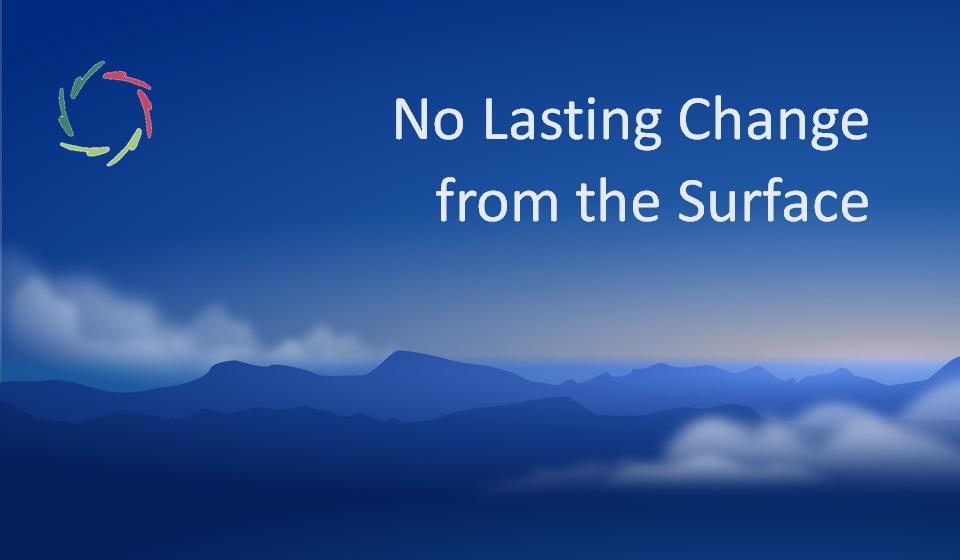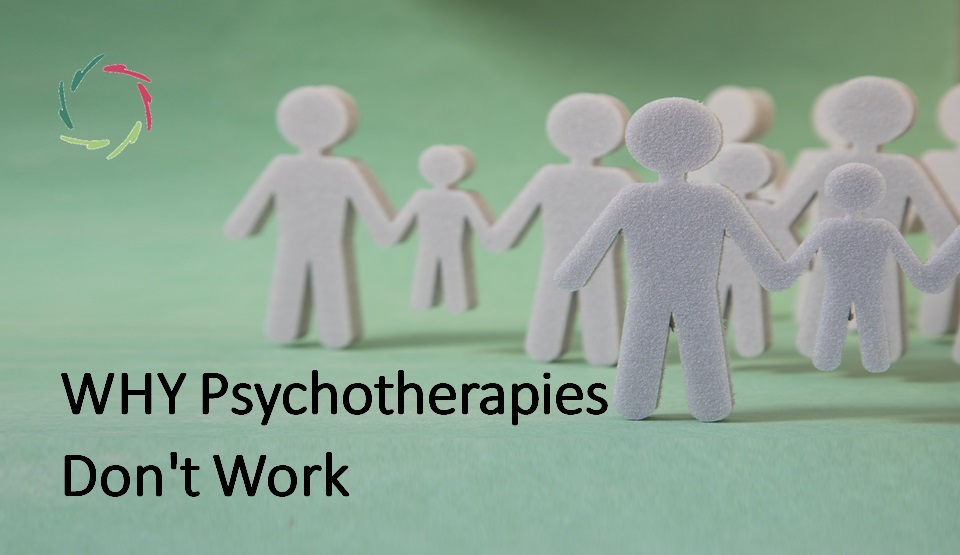No Lasting Change from the Surface

In contrast to depth, the surface is the ‘superficial’ level of the human mind. Something may temporarily change at the surface like quicksand. It’s not the right level for lasting change.
Read about ubiquitous depth.
In therapy/coaching, attaining lasting change is a challenge.
Theory goes toward a genetically determined stable state whereto any change (from this state) returns to it after a while. Therefore, skeptical researchers see external change – of environment, regulations, imposed habits, chronic medication – as necessary for any durable change. Indeed, as a matter of fact, such factors can bring lasting change.
But there is another option that remains invisible this way. Being invisible is not enough to say it is impossible ― as is frequently done in the therapeutic field. More problematic even is the contention that the surface is all there is, while each part of the surface itself comes from deep inside.
Lasting change is challenging if any possible lasting change comes from somewhere else.
Nature’s example: growth
Nature is illuminating in many cases, but especially this one.
A seed turns into a mighty oak ― called ‘growth.’ The oak seed doesn’t turn into a cat or a human being. The lesson is that growth leads to lasting change. Any other change is very challenging. Genetics don’t jeopardize growth, but any other change.
So, for a person to change, it’s essential to look for the direction of growth. The human being is specifically flexible in how to attain this growth and toward where it can evolve. Still, growth in one way or another needs to be sought. Merely diminishing symptoms is not necessarily growth-oriented. Unsurprisingly, a merely symptomatic cure is frequently not durable.
In coaching
Insight into what may be one’s true goal as a total person is a primary endeavor of any AURELIS coaching by a human coach or Lisa. This true goal is naturally growth-related, as in the analogy of the oak.
The mere diminishment of symptoms can be a surface-level goal behind which lies something more profound. Therefore, removing the symptom (or trying to) isn’t necessarily enough for any coaching to be called successful, even when the coachee may deem it so. The symptom may have an implicit, yet meaningfully mind-related reason for being present.
We all know that, don’t we?
Then why are there so many who apparently don’t?
I see some deeper longing for control in this, leading to non-hearing or worse: active basic denial. To acknowledge a deeper source of activity – mental-neuronal patterns – is to recognize that the surface level is mainly a surface that moves upon the instigation of depth.
An AURELIS coach needs to know better.
A question of identification
The more one identifies with the surface level, the more one gets into the lack-of-control problem, which can by itself lead to stress and other mental issues. These are problems of inner dissociation.
The more one learns to identify with total self – through insights and experiences – the more one can mentally grow from inner dissociation to a state of Compassion, basically.
Compassion brings lasting change
Indeed, in Compassion, the elements come together that lead to mental growth ― thus, lasting change. Eventually, it may become clear that there is no other way. AURELIS coaching, being Open therapy, is meant to open the doors of the coachee. This should be clarified to every coachee and mutually agreed before the start, since it is a specific direction.
At least, through this, lasting change becomes a personal choice.


